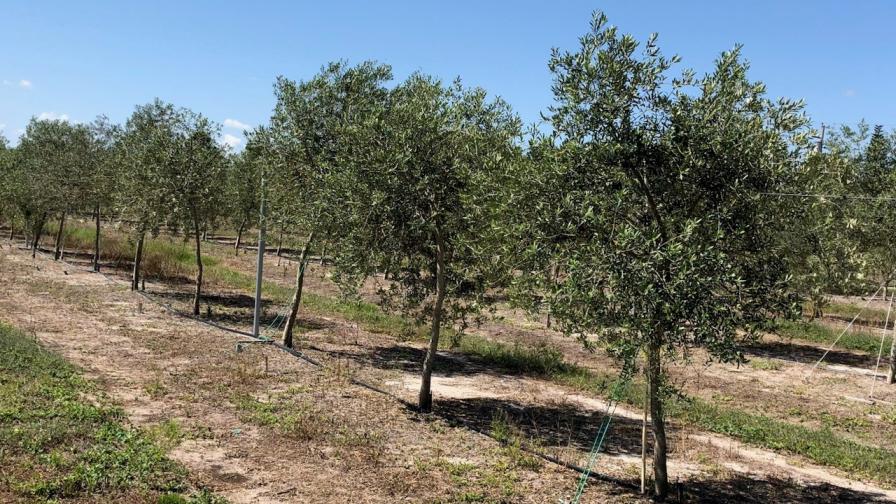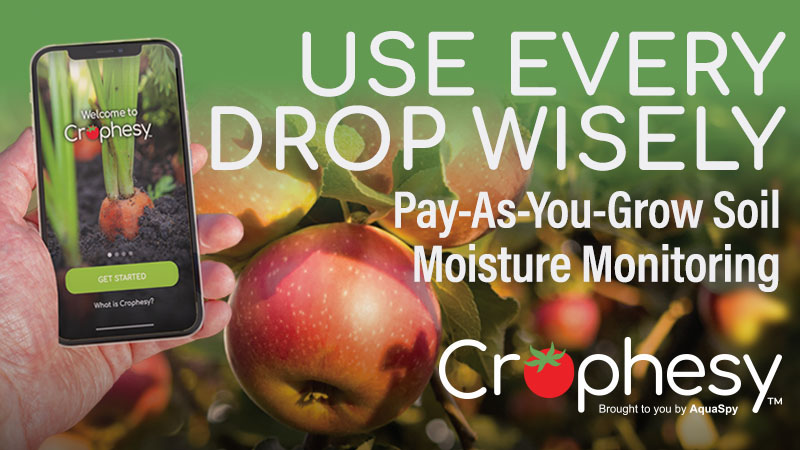Commercial Olive Production in Florida Is Being Put to the Test

Are olives the next cash crop for Florida growers? Here’s an experimental olive orchard growing in Wauchula, FL.
Photo by Lorenzo Rossi
Most of the world’s olives grow in southern European countries, such as Spain and Italy. In the U.S., California dedicates more than 30,000 acres to the commodity. But Florida may be the next agricultural region for small-scale commercial olive production.
University of Florida researcher Lorenzo Rossi believes the evergreen tree, with its oblong, sage-colored leaves, may be a good prospect for Florida growers.
UF/IFAS recently approved a nearly $70,000 grant for Rossi’s research proposal, “Evaluating olive (Olea europaea L.) as a new cash crop for Florida.” In addition to the UF/IFAS grant, the Florida Olive Council will support the project with $5,000.
The grant is part of the UF/IFAS SEEDIT initiative designed to “promote and grow integrated research and Extension team efforts toward emerging agricultural enterprises.”
“Over the last 10 years, researchers planted 25 commercial olive cultivars at 30 research and private orchard sites in throughout Florida,” says Rossi, a native Italian. “Olive responses to Florida weather conditions have not been documented and are necessary to develop a local olive industry.”
Demand for olive oil is strong. Americans consume about 100 million gallons of olive oil annually, but domestic producers contribute less than 10% of that consumption, according to the International Olive Council. Michael O’Hara Garcia, President of the Florida Olive Council, says that in 2020, 800 Florida acres were under olive cultivation, with 60 to 80 individual farms in 20 counties. Two modern olive mills convert olives into oil.
Considering Florida covers more than 420 miles from its north to south borders and several climates and soil types, the 18-month project will feature trials at two locations, Jay and Wauchula, which bookend the northern and southern extremes of Florida olive production. Rossi says that at least 20 established cultivars are available for immediate field testing.
“Fruit quality and quantity are critical factors,” Rossi says. “Trees need to be able to produce in quantity and quality that is sustainable and will allow the producers to make a profit.”
The new research includes six UF/IFAS researchers who will collaborate with Rossi to evaluate the current growers’ operations and the potential to expand it to a broader scale. The professors will contribute expertise in yield, oil quality, plant root biology, plant nutrition, water management, irrigation, and genetics.
“Our goals are to identify potential optimal olive cultivars for Northwest and Southwest Florida fields and to evaluate their production practices,” Rossi adds. “Other goals are to identify an olive tree that will produce fruit in Southwest Florida with fewer ‘chill hours’ required to flower and produce fruits. Two outreach events: one for the small farm artisanal olive production in North Florida, and a second for the South Florida commercial production, will be organized at the end of the research project.”
A seventh collaborator will lead outreach events. Alejandro Bolques, Director of the FAMU Research and Extension Center in Quincy, and crop Extension specialist, brings experience in work with olive growers to the research effort.
“Olives are a high-value crop and have been successfully tested in some groves in North Florida,” Bolques says. “If we can identify specific cultivars for commercial production, olives could be produced as a viable and highly profitable crop in Florida.”
Stay tuned for research findings as they emerge.











